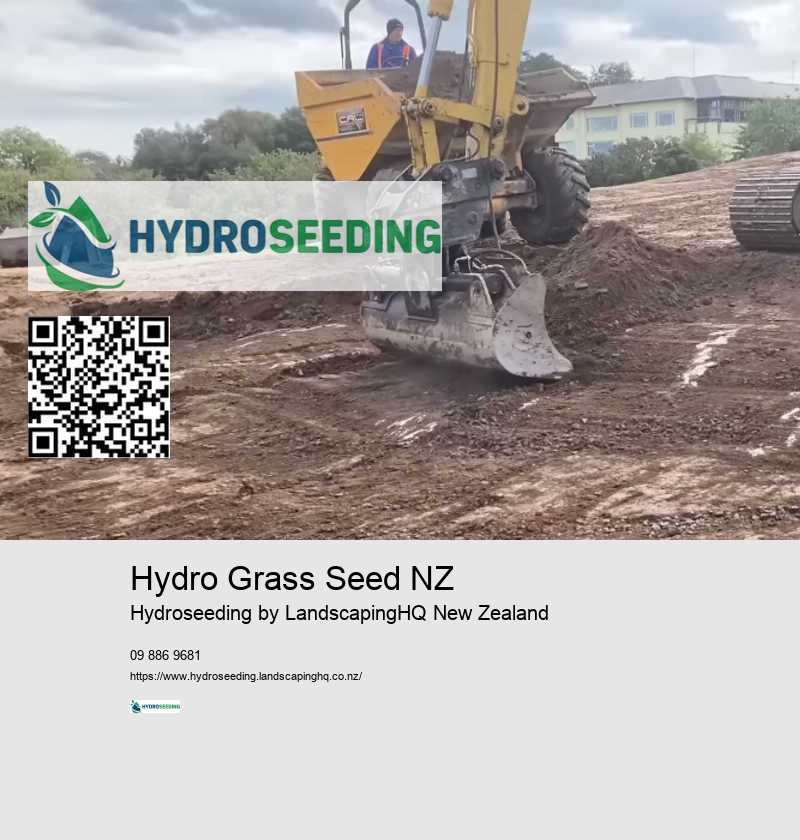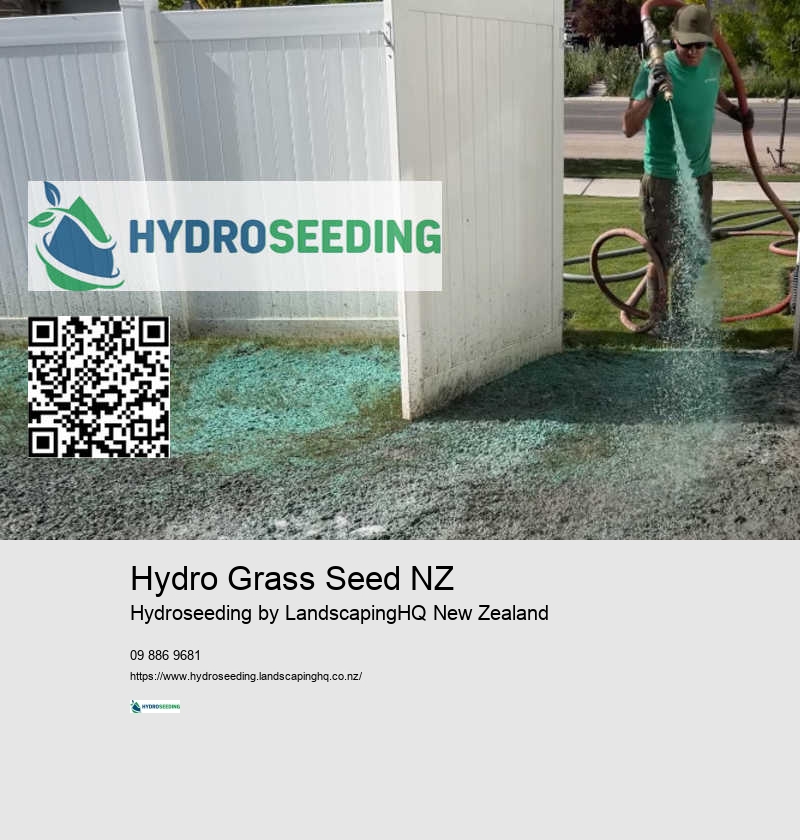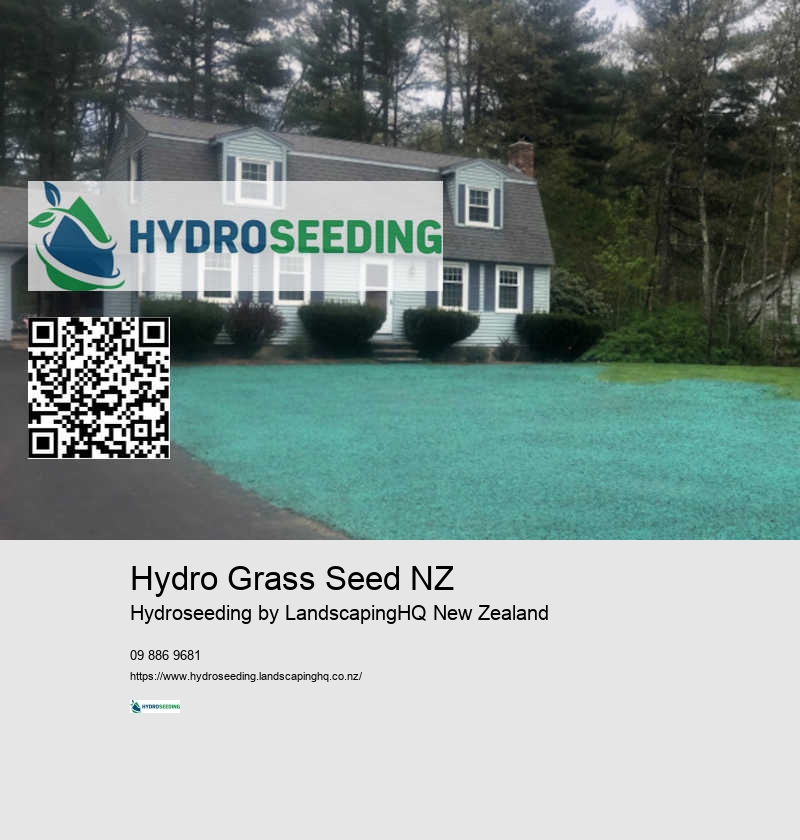

This speeds up germination, and helps establish the roots. The spring season, from September to November offers increased daylight and warmth that stimulate seed growth. Achieve lush green landscapes effortlessly - Learn how Hydroseeding New Zealand can make a difference. In the end, our needs and circumstances will determine whether we choose hydroseeding over traditional seeding. The high-quality turf produced through this method can endure the intense wear and tear of sporting events while maintaining its lush appearance. This not only saves money but also conserves water, aligning with sustainable practices.
Regular mowing will help promote dense and healthy growth. It is important to choose the right seeds for hydroseeding projects, because they will directly affect the health of the landscape. Our commitment to quality and tailored services means we're ready to tackle any project, big or small. Moreover, hydroseeding's adaptability to different terrains and climates means fewer adjustments and related expenses.
Hydroseeding is also a great way to improve stadiums. Hydroseeding offers an effective solution by stabilizing soil and promoting rapid vegetation growth, which acts as a natural barrier against erosion. Finally, maintaining a healthy lawn through regular mowing and fertilization will further discourage weed growth. The slurry mixture ensures that the seeds are evenly spread across the soil.
We also need to be cautious about over-fertilizing. We recommend regular watering to keep the area moist but not waterlogged, promoting healthy growth. By doing this, we create a solid foundation for our seeds to thrive. We tailor our hydroseeding blends to suit the specific conditions of your lawn, whether it is soil quality or sun exposure.
Cool-season grasses like fescues and ryegrasses are ideal for southern regions, while warm-season varieties such as kikuyu might thrive in the north. In addition to our commitment to maintain our hydroseeded yards with care, it's vital to be aware of the common mistakes that may hinder our efforts. With hydroseeding, we offer a faster germination process compared to traditional methods like sodding or broadcasting seeds. Together, let's embrace this innovative approach for a greener future. However, if we're working with a tighter budget and have time to invest in care, traditional seeding remains a viable option.
This process not only saves time but also cuts down on labor costs compared to traditional seeding methods. Another issue is the lack of adequate moisture.
It's a time when soil temperatures rise, creating an optimal environment for young seedlings to thrive. Moreover, using hydroseeding for large areas is cost-effective.


We are able to adapt the hydroseeder to different terrains and conditions. We might find ourselves waiting longer for full coverage, especially in challenging terrains or large spaces. With the right tools in hand, we're ready to tackle any hydroseeding challenge that comes our way. This step is essential for uniform seed distribution and germination. We believe that successful slope stabilization is a combination of the right technique and materials.
While our equipment lays the foundation for successful hydroseeding, it's the application techniques that truly harness their potential, especially in erosion control projects. This can lead to significant water savings, which is crucial for sustainable landscaping practices. By choosing hydroseeding you are opting for an environmentally friendly method that will deliver robust results and protect the landscape. We are ready to take on any project no matter how big or small, thanks to our commitment to tailored quality services.
Hydroseeding understands the unique challenges these areas face, including erosion, poor soil retention and difficult access. In the cooler South Island, we might face challenges with frost, which can delay seed germination.
Whether you're looking to create a welcoming entrance or a durable playing surface, our hydroseeding solutions provide a reliable foundation. Avoiding the hot, dry summer months ensures that seeds don't dry out, and the cold winter months prevent frost damage to young sprouts. This mixture will then be pumped into the ground through a flexible hose. These results will help us to add organic matter, such as compost, to improve soil fertility. This method will ensure that schools and sports stadiums' grounds remain safe, green and inviting all year.
We recommend monitoring the lawn for any signs of weed emergence. This provides the necessary nutrients to promote healthy growth and vibrant color. We must ensure our lawns receive adequate moisture, especially during the crucial germination period. It's especially useful for sloped and uneven terrains.
After application, maintenance is straightforward. We advise consulting with a local hydroseeding expert to choose a blend that suits your environment and intended use, whether it's for a shaded area or a sunny sports field. We can create a dense, dense turf by keeping the grass healthy and lush. This mixture is then pumped through a hose and applied evenly across the area.
Mowing should begin when the grass reaches about 7.5 cm (3 inches) in height. The consistency and the smoothness of the lawn can greatly impact the quality of play. Due to the lower cost of labor and materials, we are able to provide high-quality landscapes at an affordable price. We don't have to spend as much on irrigation and fertilization since the slurry contains all necessary nutrients and retains moisture efficiently.

Our hydroseeders are equipped with a mixing tank, pump, and spray nozzle. The councils can then allocate their resources to other important projects in the community without having to compromise on the quality. This can result in significant water savings which are crucial for sustainable landscaping. During these seasons, temperatures are moderate, and rainfall is typically sufficient to support the germination and growth of seeds. High winds are common in coastal regions, including Wellington.
In conclusion, it's important to watch out for pests. This prevents downtime and ensures consistent performance. Use our maintenance tips and guidelines. While traditional seeding is cheaper up front, the costs of maintenance and possible reseeding can be higher.
Our seed mixes are designed to outcompete weeds naturally, ensuring robust grass growth. We are dedicated to working closely with clients to deliver a beautiful lawn that improves curb appeal. Additionally, the mixture used in hydroseeding can be tailored to native plant species, promoting biodiversity and resilience in local ecosystems.
This method involves spraying a slurry mixture of seed, water, fertilizer, and a bonding agent onto the soil, ensuring rapid germination and uniform growth. Be sure to follow the recommended application instructions to avoid over-fertilizing, which can damage the grass. Hydroseeding can be an efficient and cost-effective solution to ensure rapid growth as well as environmental benefits. To tackle this, we need to implement strategies right from the start.
However, by understanding these issues, we are able to implement the best practices necessary to overcome them. It is important to prepare the soil correctly. It helps prevent soil erosion and reduces dust, creating a healthier and more enjoyable space for students and staff.
Assessing the soil's current state is the first step. This could lead to uneven growth and seed displacement in heavy rain. Regular watering helps the grass grow thick and strong, making it harder for weeds to take hold.
This personalized approach guarantees that the grass meets both aesthetic and functional requirements. Kikuyu or warm-season varieties may thrive in northern regions. It costs a fraction what sodding does.

Yes, hydroseed can be overwatered, which can hinder the germination and growth process. Hydroseeded lawns need consistent, light watering to keep the soil moist but not waterlogged. Overwatering can lead to seed displacement and hinder root development. We recommend following a specific watering schedule, especially during the initial weeks, to ensure your hydroseeded lawn flourishes. Reach out to our team for personalized watering instructions to avoid overwatering your new lawn.
Slope stabilization can be achieved through hydroseeding, erosion control blankets, terracing, and planting vegetation. Hydroseeding New Zealand specializes in stabilizing slopes through advanced hydroseeding techniques that secure soil and promote robust growth.
Hydroseeding over dead sod may be possible, but removing the sod and properly preparing the soil will lead to more reliable results. Dead sod can create an uneven surface, which affects seed contact with the soil. For expert advice on preparing your yard, contact Hydroseeding New Zealand.
Walking on a hydroseeded lawn is generally discouraged during the initial growth phase to prevent disruption of the seedbed. After a few weeks, light foot traffic is acceptable, but it�s best to wait until the lawn is well-established for regular use. Hydroseeding New Zealand provides guidance on care and maintenance to ensure your lawn thrives.
Yes, hydroseeding can be done on slightly damp grass, but it�s usually better to apply hydroseed on dry soil for optimal adherence. Ask Hydroseeding New Zealand for guidance on the best conditions for hydroseeding.